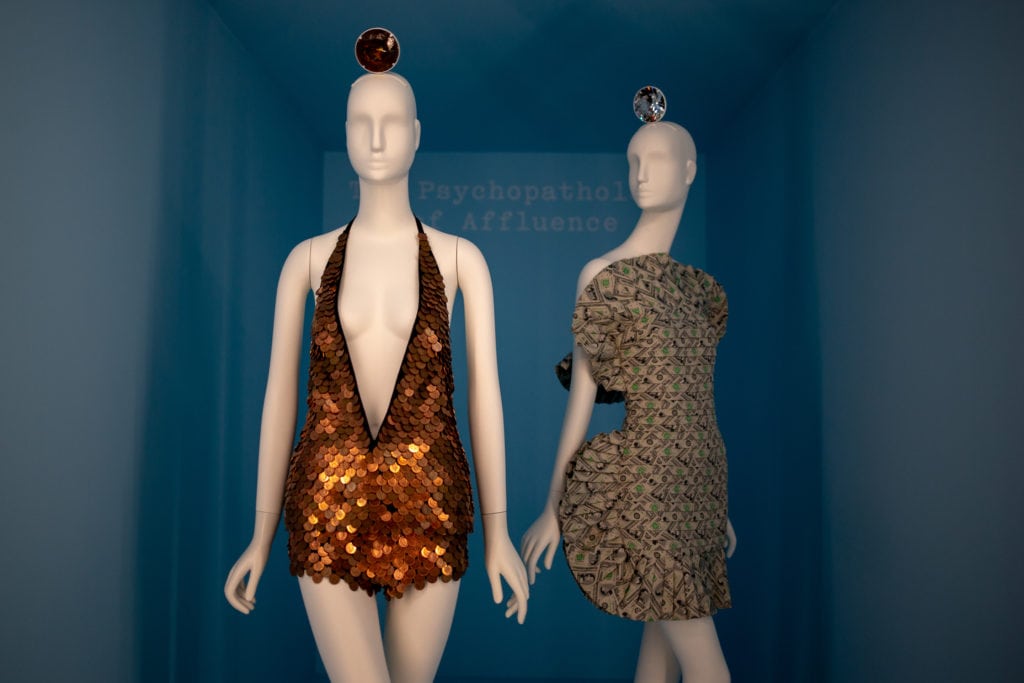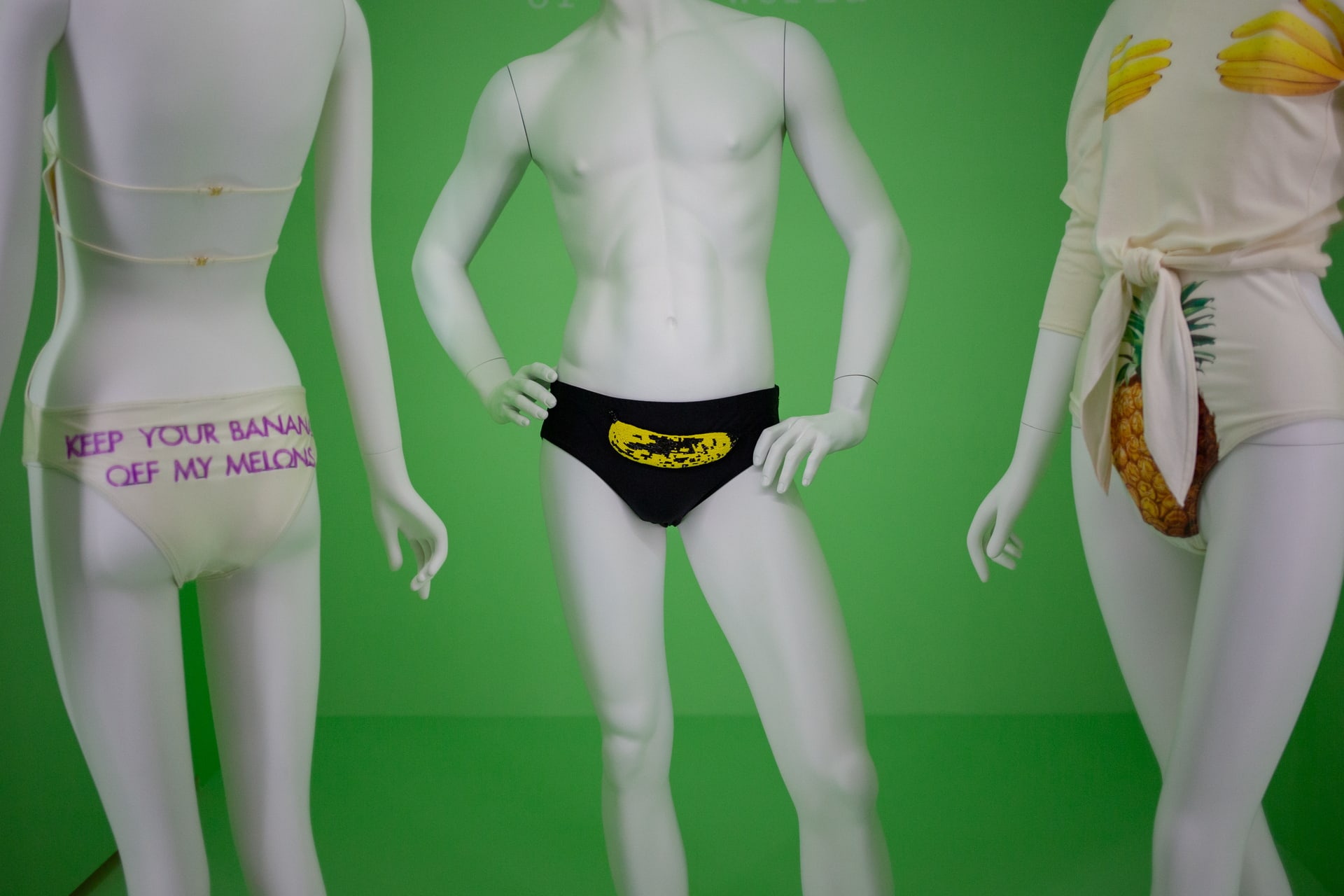Somewhere over the rainbow—up two flights of stairs at the Metropolitan Museum of Art and just to the left of good taste—is the Costume Institute’s newest exhibition, Camp: Notes on Fashion. The exhibit features more than 250 outfits, headdresses, shoes, and other objects from as far back as the 17th century that help explain the elusive idea of “camp.”
The inspiration for the exhibit is Susan Sontag’s 1964 essay, “Notes on ‘Camp.’” Together the seemingly disparate collection of objects shows visitors “how the elements of irony, humor, parody, pastiche, artifice, theatricality, and exaggeration are expressed in fashion,” according to the museum’s website.
-

Photo: Alexandra Charitan -

Photo: Alexandra Charitan -

Photo: Alexandra Charitan -

Photo: Alexandra Charitan -

Photo: Alexandra Charitan -

Photo: Alexandra Charitan
If you’ve been anywhere near social media in the past few weeks, you may be familiar with the exhibit because of its opening night, which was celebrated on May 6th during the annual Met Gala. Every year, an exclusive lineup of celebrities parades in front of New York City’s largest art museum, dressed in their—or their stylist’s—interpretation of a predetermined theme.
Being wealthy, beautiful, and famous might just be the very antithesis of camp—and even before the first feathered dress hit the red carpet, jokes were being made about the myriad ways in which clueless celebrities would interpret the theme. The exhibit is full of quotes from people who have attempted to explain what is—and maybe more importantly, what isn’t—camp, written on the walls and piped through the sound system (in between Judy Garland singing Somewhere Over the Rainbow, which is, if you’re wondering, most definitely camp).
What is (and isn’t) camp
“Camp is the psychopathology of affluence,” Sontag wrote. “Camp is cultural slumming,” according to Mark Booth, author of a book called Camp.“Camp is the artifact past its prime,” said writer Caryl Flinn. Also from Booth: “The simple, bold colours of camp are ice-cream colours: camp’s favourite colour is pink: nursery pink, sugary pink, screaming pink.”


The list of what qualifies as camp is never-ending (and as Twitter has proven, highly debatable) but preceding the Gala, the New York Times did a pretty good job explaining the aesthetic. Some celebrities succeeded, some predictably missed the point, and Celine Dion—who just by existing is very camp—reportedly thought the theme was camping, as in sleeping outdoors in a tent.
I don’t profess to know much about fashion—before or after this exhibit—but I have seen nearly every film in the John Waters oeuvre, which is, if you’ve been paying attention, the epitome of camp.
-

Iron or purse? | Photo: Alexandra Charitan -

Photo: Alexandra Charitan -

Photo: Alexandra Charitan -

Photo: Alexandra Charitan -

Photo: Alexandra Charitan
But it’s a shame that the outfits for the Gala are planned before the exhibition is open—because after spending an hour amongst the flamingo masks and trompe-l’oeil dresses, I had a much better idea of what constitutes camp.
Pieces in the collection have a high fashion pedigree. The exhibition is held in The Anna Wintour Costume Center, a wing of the Met named after the infamous Vogue editor-in-chief, and chair of the Gala since 1995, after all. But the inspiration and themes represented are decidedly low-brow. Even the mannequins—some of which are nursery pink, and therefore, camp, according to Booth—look cheap.


Camp—and the fashion industry in general—is also inextricably linked with sexuality. “Camp is masculine-feminine,” British film critic Jack Babuscio wrote in his essay “Camp and the Gay Sensibility.” That’s the beauty of camp—it’s as complicated and contradictory as the people who embody it. Camp can convey a profound message or have absolutely no meaning at all. Camp is made to be interpreted—but camp will also make fun of those who dare to analyze.
Swans and salisbury steaks
The exhibition begins with camp’s origins, and the discount mannequins showcase historic garments alongside documents, Tiffany lamps, and classic paintings. The walls are painted bubblegum-pink, a reminder that while millennials may think they invented the flattering color in service of the Instagram selfie, nothing is ever really new.
-

The infamous swan dress. | Photo: Alexandra Charitan -

Photo: Alexandra Charitan -

Photo: Alexandra Charitan -

Trash can purse. | Photo: Alexandra Charitan -

Photo: Alexandra Charitan
When the exhibit opens up into a larger space, the pieces really shine with a little breathing room. In the darkened room, two tiers of brightly-lit, rainbow-colored cubicles—like a truncated Hollywood Squares set—divide the collection into themes (this is still an art museum, albeit one that now features a designer’s ode to McDonald’s). Pieces on the top row are a bit difficult to see, but maybe that’s the point. Camp is both an in-your-face assault to the senses and a secretive, back-alley party to which not everyone is invited.
-

The “meat” on this dress is latex. | Photo: Alexandra Charitan -

Photo: Alexandra Charitan -

Photo: Alexandra Charitan -

Photo: Alexandra Charitan -

Photo: Alexandra Charitan
Björk’s infamous 2001 swan dress is on display here, alongside several other bird-related pieces and enough loose feathers to reconstruct an entire flock. There’s a classic little black dress that is literally labeled “little black dress,” a dress printed to make the wearer look like a life-size paper doll (complete with foldable tabs), and several dresses that look like oversized shower loofahs.
A banana-printed speedo playfully hints at what lies beneath, and a latex dress that looks like it’s constructed of thinly sliced prosciutto would be ridiculous if Lady Gaga (an unequivocal queen of camp) hadn’t already worn a dress made of real meat on a red carpet in 2010.

It’s hard to stand out in New York—a city in which I recently saw not one, but two different people in the park dressed up as wizards (they didn’t know each other)—but it’s even harder to pick the strangest or most memorable piece from the Camp exhibit. My love of fake food, however, compels me to choose Jeremy Scott’s TV dinner dress, made for Moschino’s fall 2019 line. The kimono-type garment features a vegetable medley of peas, carrots, and corn on one side and mashed potatoes with a pat of butter on the other. If a train made to resemble a Salisbury steak counts as fashion, then maybe I should start subscribing to Vogue.
If you go
Camp: Notes on Fashion is on display at the Metropolitan Museum of Art until September 8, 2019. The museum is open Sunday-Thursday, 10:00 a.m. – 5:30 p.m., Friday and Saturday 10:00 a.m. – 9:00 p.m. For New York State residents and New York, New Jersey, and Connecticut students, admission is a suggested donation. All other visitors must now pay a standard admission price.






